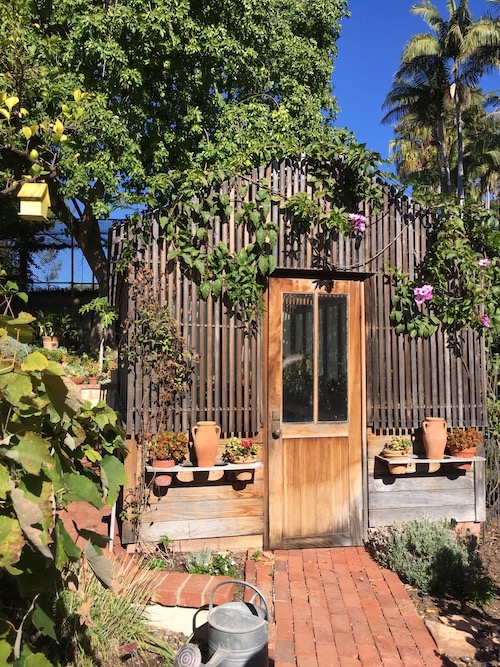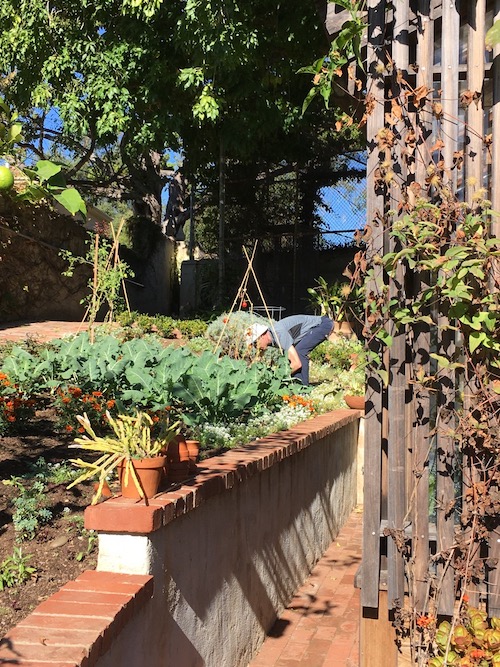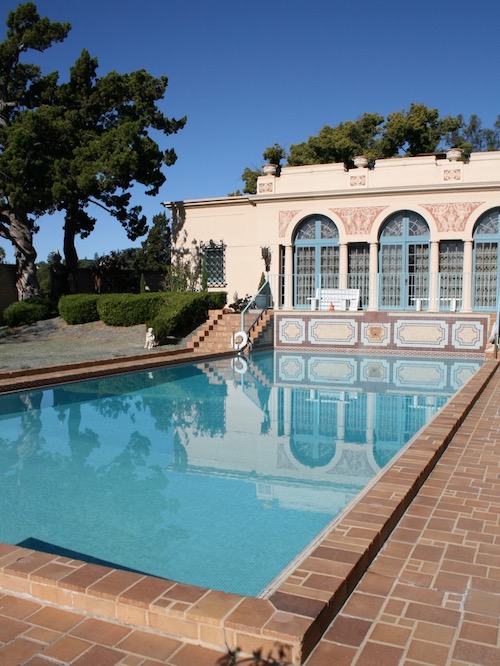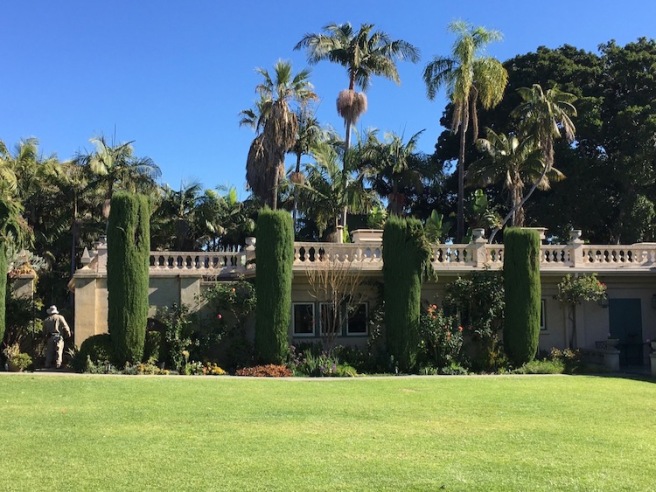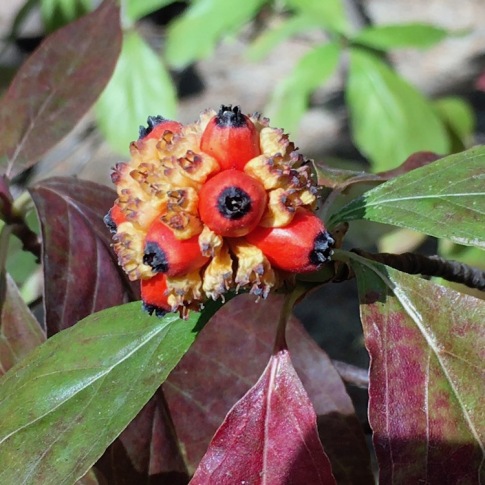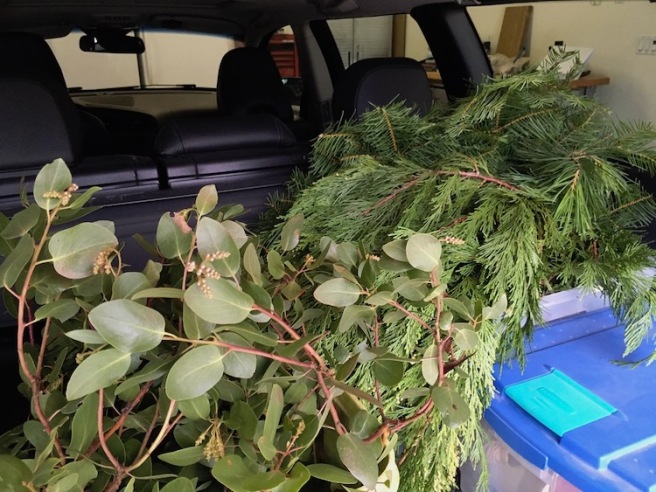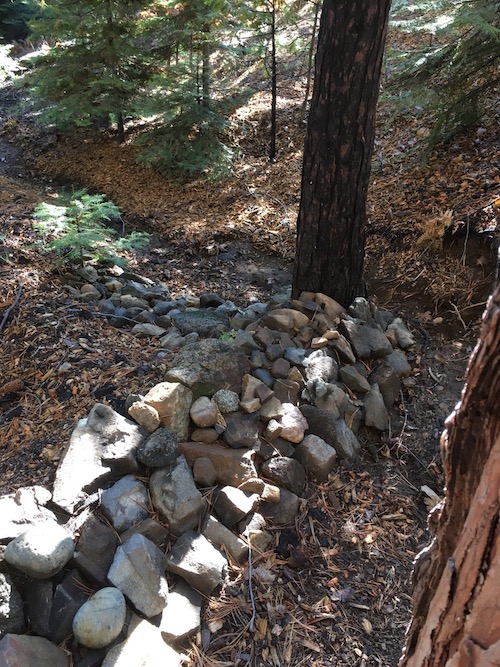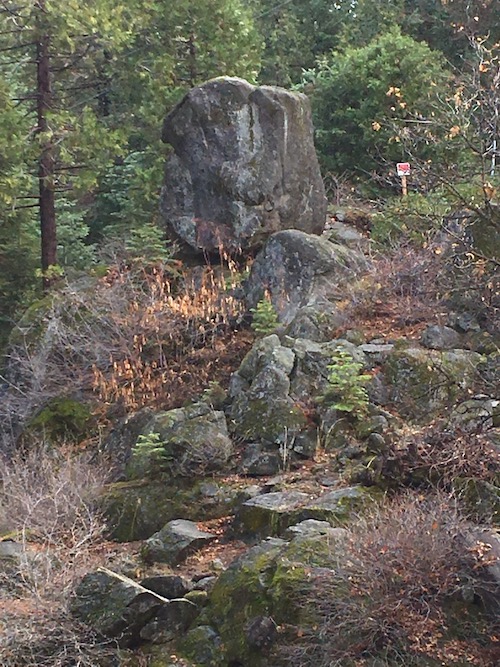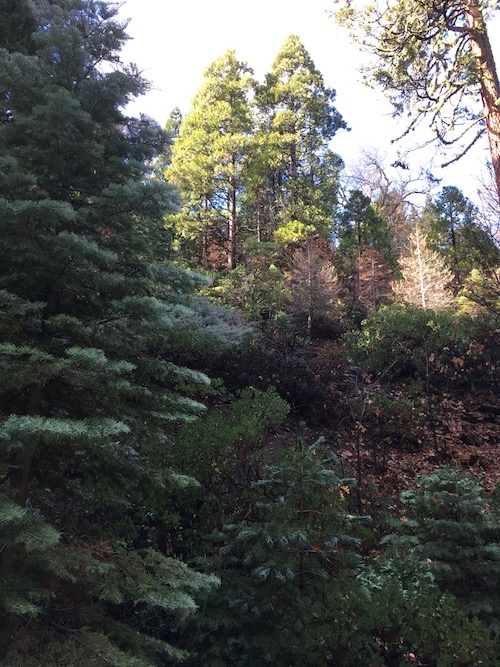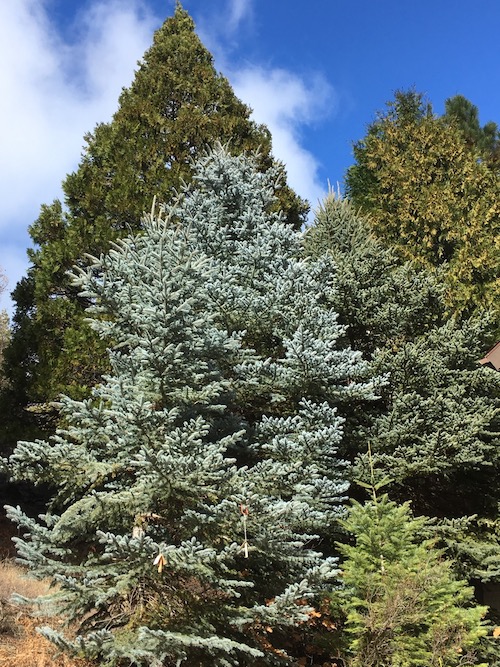
We kicked off 2020 with an overnight trip to Pasadena–one of my favorite SoCal cities full of historic homes and beautiful gardens–to take in the iconic New Year’s Day Rose Bowl Parade. A number of Rose Bowl related events lead up to the parade so the stadium and its surrounds are flush with RVs, buses, cars and people clutching their various tickets and of course, the Official Rose Parade program! One of the large float building barns is open to the public, allowing those of us who have only seen these marvelous melds of engineering and botanicals on our TV screens to get a close up view of what it takes to get them on the road for their 5.5 mile slow crawl on January 1st.
The floats are viewed via a sort of boardwalk which winds around and through the barn. Think of those moving walkways in large airports with folks pretty much shoulder to shoulder but it is your legs actually doing the moving. Volunteers are everywhere. The white suited ones with official name tags are directing traffic and talking to passers by about each float and literally hundreds of others, many in sweatshirts due to the barn’s cool temperature, are snipping flowers, scaling scaffolding, and whatever other tasks are needed to get their assigned work of art perfect to the last petal and seed. Everything that covers the float’s mechanics must be natural material–flowers, petals, fronds, grains grasses, seeds, fruit or vegetable.
First up are the floats proudly depicting the school name and team colors of the two outstanding football teams that will compete in the 106th Rose Bowl Game–Oregon State University (Ducks) and University of Wisconsin (Badgers).



I loved seeing the up-close detail on the beautifully restored antique cars and carriages that will transport the parade’s Grand Marshals, dignitaries and honored guests on the parade route.
The Parade’s three Grand Marshals will ride in two Pope-Hartford Touring cars and a Pope-Hartford Model T, all dating from 1910-1911 and wearing dazzling floral arrangements in warm fall colors.




The 2019 inductees into the Rose Bowl Hall of Fame must look forward to their venture down Colorado Avenue in a 1916 Seagrave Fire Engine, the first engine purchased by the Monterey Fire Department. This engine earned the nickname “The Old Gray Mare” when in 1924 when lightening struck oil tanks on Cannery Row and it pumped water continuously for 72 hours! As it turned out, The Old Gray Mare would end up being towed most of the route but that made its floral finery none the less beautiful.


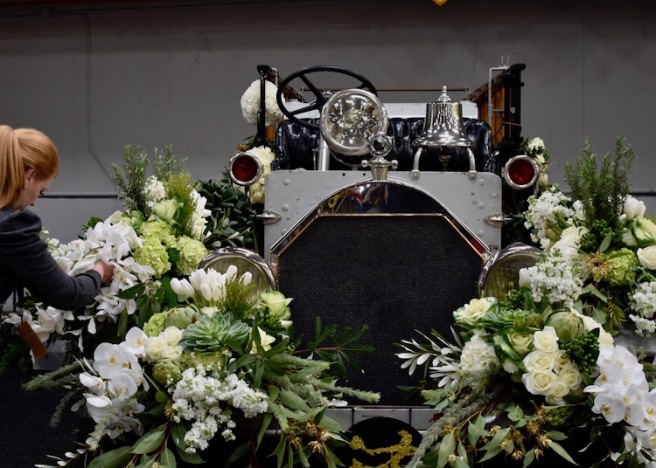
 As much as I adore colorful floral displays I can never get enough of the classic whites and greens! Wouldn’t this be a fun way for a bride to arrive at the church on her big day?
As much as I adore colorful floral displays I can never get enough of the classic whites and greens! Wouldn’t this be a fun way for a bride to arrive at the church on her big day?
The Tournament of Roses President and the Mayor of Pasadena each had their own spectacular ride.

The President’s Rolls Royce Silver Ghost was actually blue! The Mayor and his family will pile into this replica of an 1880 Abbott Downing Hotel Coach (background of photo) pulled by the Express Clydesdales, an eight horse hitch of rare black and white Clydesdales.

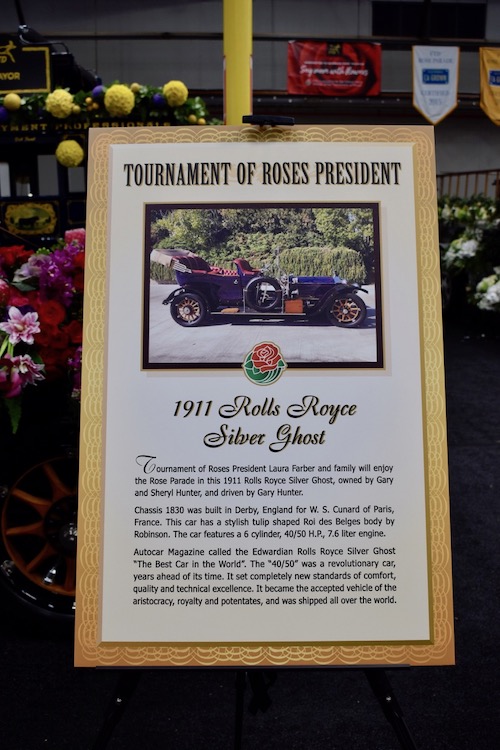

Finishing touches are added to an 1880s sleigh which will transport stars of the Broadway show Frozen after their mid-parade show. The sleigh will be pulled by a team of Percheron horses.

In the background you can see yet another color palette of florals–this one adorning a 1915 Pierce-Arrow 48-7-Passenger Touring model. Until 1928 there was a Pierce-Arrow Motor Car Company dealership on Colorado Blvd. in Pasadena.
I know I promised you floats! This barn had a half dozen more floats in progress with volunteers doing all manner of things. I learned that the Tournament of Roses manages almost a thousand volunteers each year to cover the events. This year’s theme The Power of Hope is reflected throughout the entries.
China Airlines presents “Dreams of Flying, Wings of Hope”

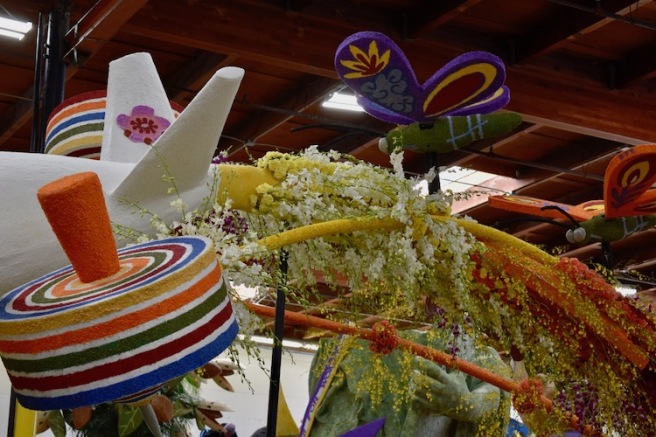
Elements representing Taiwan including these butterflies and spinning tops expresses the good hopes of its people and welcomes visitors to the island nation. The decks of the float are filled with thousands of roses, orchids and lilies.
Pasadena Celebrates 2020: Celebrating the 100th Year Anniversary of the Passage of the 19th Amendment presents “Years of Hope, Years of Courage”
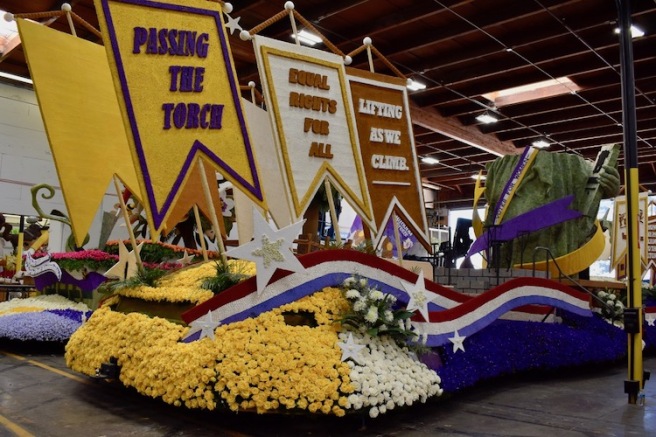
The purple, gold and white flowers throughout the float represent the colors of the suffrage era, along with a band of red, white and blue representing the American flag. Notice that Lady Liberty is missing her top half as it will have to be attached after the float leaves the barn.
Amazon Studios presents “Troop Zero”

Not all float participants are cities or charitable organizations. Mega-business Amazon’s entry celebrates an upcoming 2020 film release in which a girl dreams of outer space and organizes a group of scouts to make her dream come true. There are over 15,000 flowers on this float.

Really behind the scenes at Troop Zero–notice the fire extinguisher camouflaged by the red roses. To the left of the pole you can see that big baking potatoes are used as rocks on the hillside!

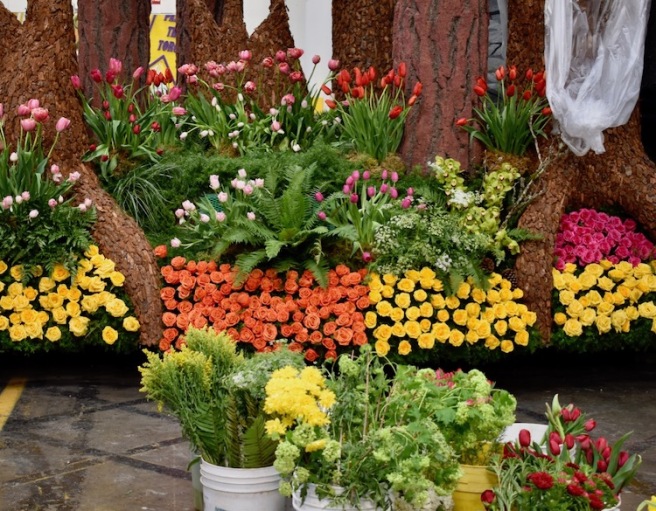

Honda presents “Our Hope for the Future”
The flagship sponsor’s float entry celebrates the optimism created by the spirit and vitality of children. Six children are pursing their dreams through a variety of activities. This float leads the parade after the opening spectacular and as we saw it only about 18 hours before parade time it looked pretty undone–my though was that they would need that spirit of optimism before the day was out.


Except for the gentleman on the phone who I’m sure was taking a much needed break, all these sitting and standing volunteers are laboriously scissor cutting off the dried blossom ends of buckets upon buckets of purple statice. The mandate was purple only–no green stem.

Then the power tools came out in the form of multiple blenders and spice grinders, in which all those cut off flowers were ground down to a coarse powder and offloaded into bins to be applied to the float–almost like painting with flowers.
Cal Poly Universities present “Aquatic Aspirations”
An optimistic submarine sets out to discover fortune and riches but finds a breathtaking underwater home thriving amongst an old sunken ship instead. This self built float earned a Certified California Grown designation by sourcing at least 85% of its flowers from California farms.






It seemed fitting to exit the barn at this homegrown float. It was my favorite of those featured in the barn. It is my understanding that there are a number of barns in various Pasadena locations, each with as much float activity as its space can handle. It is no mean feat to round all the floats up from their disparate locations and get them lined up for the parade’s start.
Several years ago a few of our Orange County friends spent a few day in Pasadena working on the floats. I’m not sure how you get that opportunity but I think I’ll investigate it. The volunteers were having a great time and there has to be a huge satisfaction in knowing you were part for making this immense endeavor a success!
We have a New Year’s Day crack of dawn wake up call to travel from our hotel to the Colorado Avenue parade route where we need to be in our grandstand seats before 8 am to not miss USAF B-2 Spirit (Stealth) flyover. Parade photos may take another few days to post!






